Scaling an engineering team is one of the most critical—and risky—phases for any startup. Do it right, and you build a solid foundation for innovation and growth. Do it wrong, and you create silos, slowdowns and cultural fragmentation.
In 2025, successful scaling isn’t about hiring as fast as possible—it’s about scaling intentionally, with structure, flexibility and purpose. Few have done this better than Nikolay Mironenko, co-founder and director of engineering at Moss, an European fintech platform offering smart expense management and corporate credit cards.
Under Mironenko’s leadership, Moss grew its engineering team from 5 to over 50 engineers across multiple locations—including building a thriving 20-person R&D center in Tallinn, Estonia—while maintaining velocity, ownership and strong product delivery culture.
Here are some real-world insights and actionable lessons from Moss’ journey that founders, CTOs and engineering leaders can apply in 2025.
1. Avoid the Hypergrowth Trap: Scale With Intention
Moss resisted the urge to hire aggressively just to meet short-term demand. Instead, the leadership team set clear hiring goals aligned with product milestones, team readiness and infrastructure capacity.
For example, when Moss raised its Series A round, instead of doubling the team overnight, it staggered growth over quarters, ensuring infrastructure, documentation and onboarding matured in parallel. This helped avoid the common trap of overhiring without clear ownership or direction.
2. Build Flexible Structures: The “Mission and Core” Model
One of Moss’s most impactful decisions was to organize engineering work into two types of teams:
- Core teams (5 engineers) that ensure reliability, platform health and bug fixes. They manage existing features and infrastructure, maintaining stability as the product scales.
- Mission teams (2–3 engineers) that focus on building new features or launching experiments. Missions are time-boxed to three months and tied to specific product or business outcomes.
This model gave Moss the flexibility to innovate without compromising stability. It also enabled rapid experimentation. For example, Moss used a mission team to develop a localized invoicing feature for the DACH region. The team built, shipped and validated it in under 8 weeks—then handed it over to the core team for long-term maintenance.
Inspired by the Spotify Squad Model, Moss made the approach its own by rotating engineers between mission and core roles, which keeps engagement high and prevents silos.
3. Organize Around Tribes for Cross-Functional Focus
To support growth and autonomy, Moss introduced tribes—cross-functional groups responsible for specific product domains or infrastructure areas. Each tribe typically includes 15–16 people, made up of engineers, product managers and designers working together toward shared outcomes.
Tribes are not just containers for teams—they are self-sustaining units with clear missions, ownership boundaries and leadership. Each tribe has an engineering manager and a group product manager, who are accountable for the roadmap and delivery. Within each tribe, mission and core teams operate with their own goals, enabling them to stay lean and fast while benefiting from tribe-wide alignment.
This structure empowers engineers to collaborate more effectively, understand the broader impact of their work and move between teams without losing context—essential in a fast-growing company.
4. Hire for Adaptability, Not Just Experience
Rather than hiring for narrow technical expertise, Moss prioritized adaptability. Engineers are encouraged to work across the stack, from backend services to frontend UIs and occasionally DevOps pipelines.
This approach paid off when the company pivoted to multi-product expansion. Engineers who were already used to jumping into new codebases and problem domains could quickly adapt, reducing onboarding time and speeding up time to value.
In Mironenko’s words: “Adaptability is our superpower. The industry changes fast—what matters more than deep experience in one framework is a mindset of curiosity, learning, and collaboration.”
5. Plan Your Roadmap Before You Scale
Moss avoids ad-hoc project planning. Each quarter, engineering managers and product leads prepare a roadmap that includes upcoming missions, expected outcomes and required staffing.
For instance, when Moss planned to expand into France, the team had already allocated a mission team three months in advance to work on language localization, regional compliance and integrations. By the time launch approached, the groundwork was done.
This roadmap-first approach prevents surprises and makes onboarding new engineers smoother—because everyone knows what’s coming.
6. Balance Speed With Sustainability
Moss scaled aggressively, but never recklessly. Every engineering decision was evaluated based on both short-term needs and long-term sustainability.
To ensure this balance, Moss built internal rituals like regular tech huddles, architecture forums, quarterly tech health reviews and post-mission retrospectives.
One example of this in action: After launching several new features in quick succession, the team paused to refactor legacy components that had accumulated debt. This proactive investment in tech health helped avoid critical downtime and performance issues.
7. Scale Smart, Not Just Fast
Startups in 2025 face immense pressure to grow fast. But as Moss proves, success doesn’t come from throwing people at problems—it comes from building scalable systems, hiring thoughtful engineers and balancing innovation with infrastructure.
Moss’ engineering team didn’t grow from 5 to 50+ by accident. It was the result of hiring adaptable engineers, organizing around tribes and missions, planning intentionally and embedding feedback into the process.
If you’re scaling your team this year, take a page from Moss: Start slow, build smart and scale sustainably.

